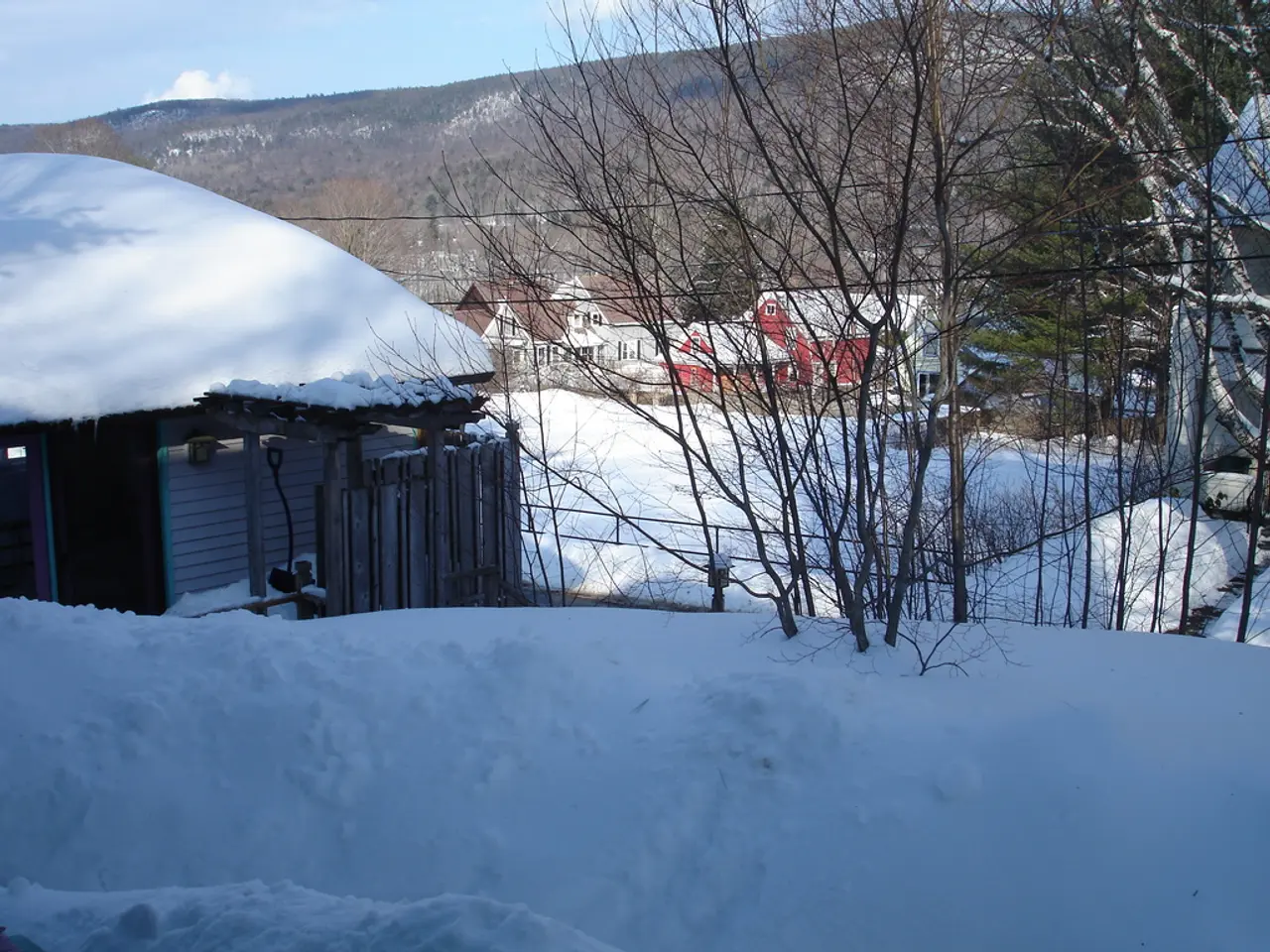Isolated Locations in Switzerland Due to Heavy Snowfall, Leaving Them Disconnected
In Europe, the weather is painting a picture of contrasts. While southern and central parts of the continent bake under a returning Heat Dome, causing intense heatwaves and exacerbating droughts and wildfire conditions, the Alpine regions and their adjacent areas are experiencing a unique blend of heat and storminess [1][2][3].
Italy, directly under the influence of the Heat Dome, is bracing for peak temperatures set to reach the low 40s °C by the weekend [1]. This weather condition increases the risks of wildfires and drought stress in the southern and central regions. However, in a surprising twist, northern Italy is facing a completely different reality - heavy rainfall and flood danger [1]. Up to two meters of fresh snow is predicted at 1,500 meters altitude in some regions [1].
The regions of Liguria, Piedmont, and Lombardy are particularly affected by this weather anomaly. Experts advise against traveling to Italy due to the flood risk [1]. Stays near rivers should be avoided due to the potential for rapid water level rises [1].
Meanwhile, in Switzerland, the weather is playing tricks. The country is experiencing unseasonably cold and snowy conditions, causing further disruptions. Villages in Valais, including Zermatt and Oberems, are cut off from the outside world due to the snow [1]. The canton of Valais has seen so much snowfall overnight that these villages are isolated [1].
Switzerland's weather for Easter was unusually cold and snowy, and this trend continues [1]. The country is experiencing stark differences in temperatures compared to Austria, with Switzerland being colder [1].
Austria, on the other hand, is enjoying early summer temperatures in some regions, while its southern holiday regions are significantly cooler compared to the rest of the country [1]. This contrast in temperatures between Switzerland and Austria is quite notable [1].
The weather in Austria's holiday regions is cooler than the rest of the country, a stark contrast to the heatwave gripping much of Europe [2]. Austria, while not as severely impacted by the heat extremes as southern Europe, will have weather characterized by instability leading to occasional storm activity amid warm conditions [2].
The volatile pattern in Switzerland and Austria reflects Central Europe’s position as a transition zone between cooler western and hotter eastern conditions [2]. This mix of sunny periods and intense thunderstorms with heavy rain and strong winds is causing disruptions and challenges in both countries [2].
As of early August 2025, the heatwave is expected to last into mid-August, worsening existing droughts and wildfire conditions, especially in Iberia and Southeast Europe [1]. No recent reports specifically indicate extreme flooding or snow-related hazards in Switzerland or Austria at this time; instead, the focus is on heat, drought, and storm risks as summer progresses.
[1] Climate Signals - Europe's Heat Dome and Drought Crisis [2] Swiss Meteo - Current Weather Conditions in Switzerland [3] Austrian Meteorological Service - Current Weather Conditions in Austria
- The juxtaposed weather conditions in Europe are leading to unusual circumstances, as northern Italy is beset by heavy rainfall and flood danger, while southern regions struggle with a heatwave that increases the risks of wildfires and drought stress.
- In contrast to the heatwave and drought stress experienced in much of Europe, Switzerland and Austria are facing their own weather-related challenges, with Switzerland experiencing unusually cold and snowy conditions, causing disruptions and isolation in affected villages, while Austria is dealing with instability leading to occasional storm activity amid warm conditions.
- The field of environmental science and weather forecasting is crucial in understanding and predicting these extreme weather events, as they have significant impacts on the environment and human lives, such as the increased risks of wildfires, drought stress, and flood danger in various regions of Europe.







